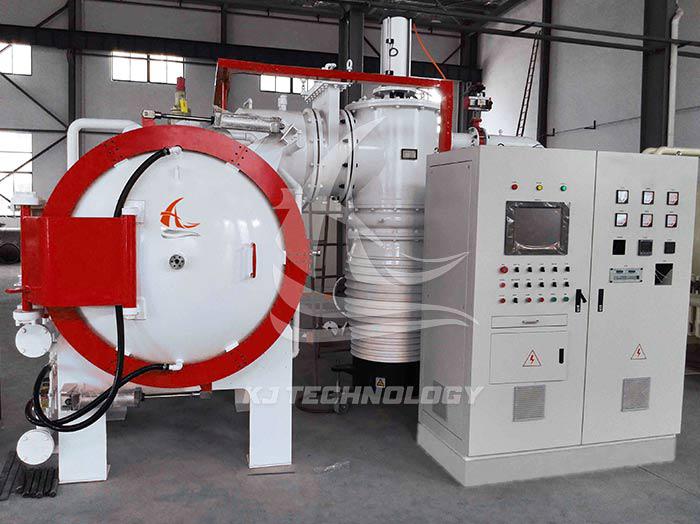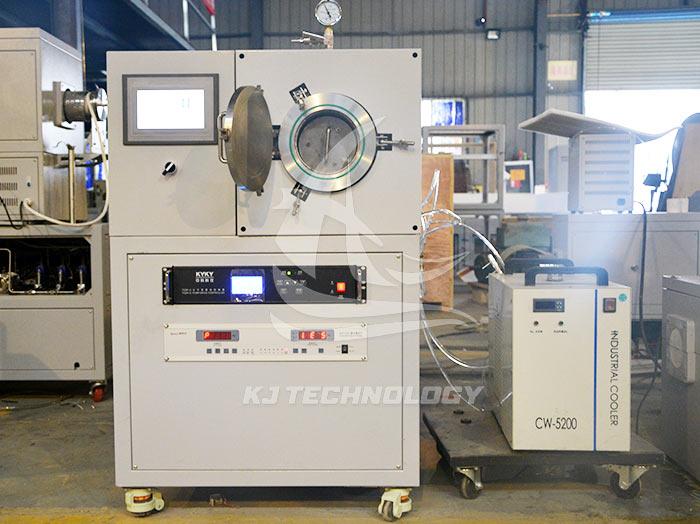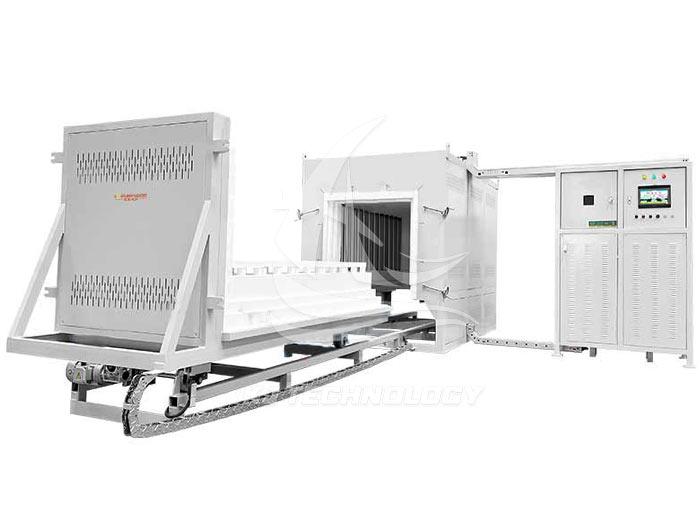What are the applications of pressure sintering furnaces in the field of powder metallurgy?
 07-09-2025 Author: KJ technology
07-09-2025 Author: KJ technology
Pressure sintering furnace is widely used in the field of powder metallurgy, and its core function is to achieve densification of powder materials through high temperature and high pressure environment, improve the physical properties and processing accuracy of products. The following is a detailed explanation of specific application scenarios and technological advantages:
1. Typical application scenarios
Production of Hard Alloy Cutting Tools
Process requirements: Hard alloys (such as WC Co) need to be sintered at 1400-1600 ℃ with a pressure range of 6-10MPa to eliminate pores and improve hardness.
Technical effect: Pressure sintering can refine the grain size (average 0.5 μ m), resulting in a tool hardness of 92.5HRA, a bending strength exceeding 4000MPa, and a cutting speed 3-5 times higher than traditional tools.
Preparation of metal based composite materials
Process requirements: Titanium/aluminum composite materials need to achieve interface bonding between metal and ceramic reinforcement phases (such as SiC fibers) under a pressure of 5MPa, with a 30% increase in bonding strength.
Technical effect: Pressure sintering promotes the filling of pores with liquid-phase copper, resulting in a relative density of 99% for tungsten copper alloy and an increase in thermal conductivity to 180W/(m · K), suitable for electronic packaging and spark electrodes.
Processing of special powder metallurgy parts
Process requirements: High speed steel (such as M42) needs to be sintered at a pressure of 9.5MPa to refine carbide particles (size ≤ 1 μ m) and achieve a hardness of 65HRC or higher.
Technical effect: Pressure sintering achieves a density of 99.5% for stainless steel powder, and its corrosion resistance (salt spray test ≥ 1000 hours) is superior to traditional castings. It is used in marine engineering and chemical equipment.
Friction materials and multi-layer composite materials
Process requirement: Powder metallurgy friction plates need to be sintered at a pressure of 1-2MPa to increase the welding strength between the friction layer and the steel backing layer by 50%.
Technical effect: The pressurized sintering furnace ensures a constant pressure during the contraction of the friction material by combining its own weight with the hydraulic system, resulting in a product shrinkage rate error of ≤ 0.1%.
2. Analysis of Technical Advantages
Enhancement of densification efficiency
Pressure sintering promotes particle rearrangement and plastic flow through external forces, reducing the porosity from 5-10% in conventional sintering to below 0.1%. For example, silicon nitride ceramics can be sintered at a pressure of 10MPa, with a porosity controlled within 1% and a bending strength exceeding 100MPa.
Grain refinement and performance optimization
High pressure environment suppresses abnormal grain growth, such as in hard alloy sintering, where pressure can homogenize WC grain size (average 0.5 μ m), increase hardness by 10% -15%, and enhance wear resistance by 40%.
Process compatibility and flexibility
Modern pressure sintering furnaces integrate vacuum systems (maximum vacuum ≤ 2Pa) and atmosphere control systems (such as maximum argon pressure of 5.2MPa), supporting continuous dewaxing, sintering, and hot isostatic pressing (low pressure). For example, the low-pressure hot isostatic pressing vacuum sintering device can shorten the sintering cycle of hard alloys by 30% and reduce energy consumption by 20%.
Large scale production support
Industrial grade pressure sintering furnace (such as a cavity with a diameter of 300mm × H500mm) can achieve sintering of large-sized workpieces, with a single furnace loading capacity of 50kg. Combined with a walking beam conveyor system, production efficiency is increased by more than 50%.
3. Key parameters for equipment selection
Temperature range: 1600-2000 ℃ (high temperature range required for hard alloys/ceramics)
Pressure capacity: 6-10MPa (hard alloy) or 3-5MPa (composite material)
Temperature control accuracy: ± 1 ℃ (ceramic materials require strict temperature control)
Pressure fluctuation: ≤± 0.02MPa (stability requirement during pressure holding stage)
Chamber size: φ 200-400mm (suitable for different part sizes)
Atmosphere control: Vacuum degree ≤ 2Pa or inert gas (such as argon) protection
4. Industry application cases
Automotive industry: Pressure sintered turbocharger rotor (silicon nitride ceramic), temperature resistance up to 1200 ℃, speed exceeding 200000 revolutions per minute, engine efficiency increased by 15%.
Aerospace: C/C composite material pressure sintering, density up to 1.9g/cm ³, anti-oxidation coating adhesion increased by 60%, used for rocket throat lining and brake discs.
Electronic packaging: AlN ceramic substrate pressure sintered, with a thermal conductivity of 230W/(m · K), meeting the heat dissipation requirements of high-power devices.








